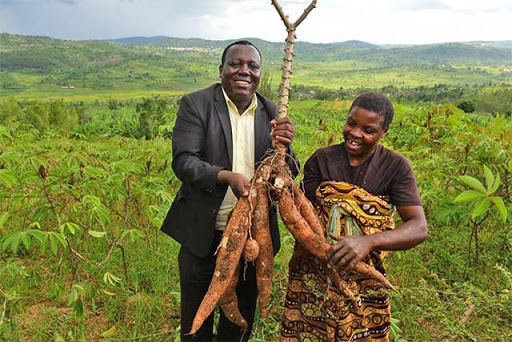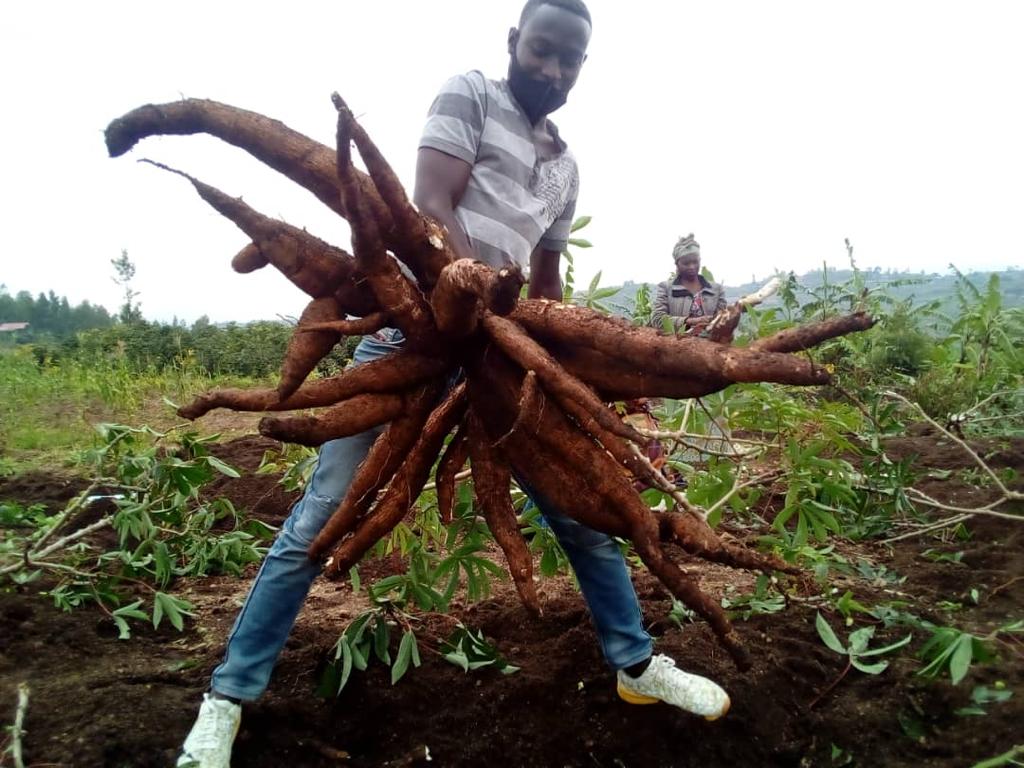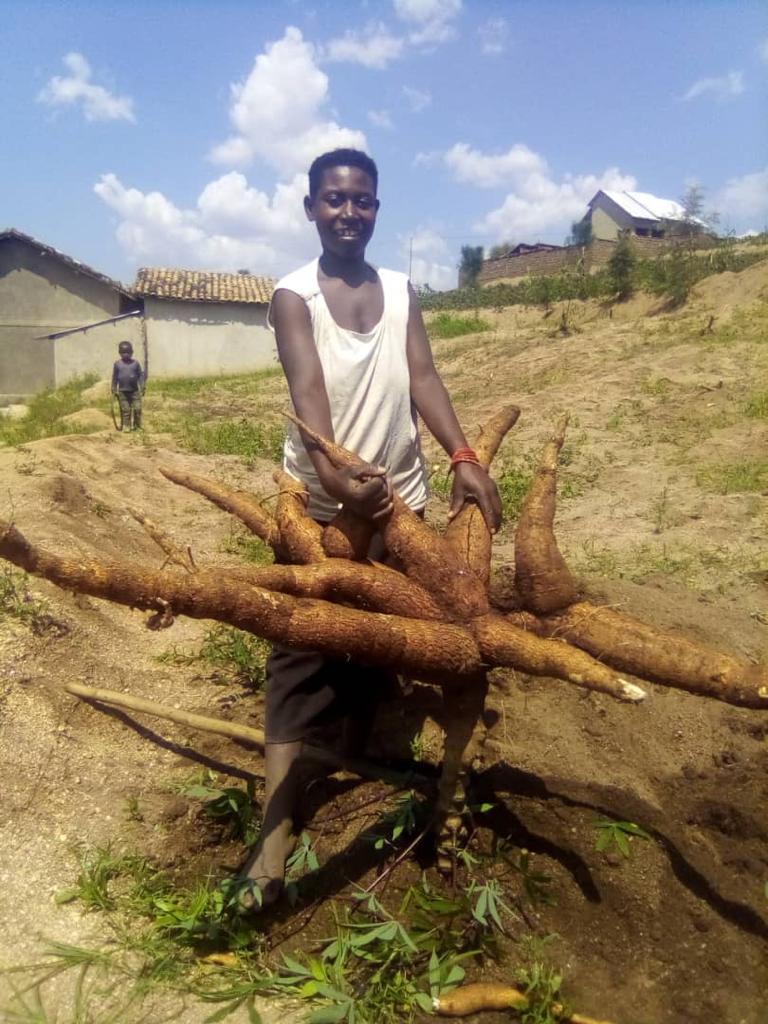Ingabo Syndicate & Agriterra help farmers to multiply their cassava yield by five
26-02-2021- Now, a farmer can harvest more than 50 tons per hectare
- The method used to increase the yield was acquired during a study tour co-organised and sponsored by Ingabo Syndicate and Agriterra
Emmanuel Bashimiki has been a cassava farmer for more than 20 years. Mr. Bashimiki says the cassava is of great benefit to him and allows his family and neighbours to develop. He used to harvest between 10 and 20 tons per hectare, but, thanks to a new cassava growing technique, he can now harvest more than 50 tons per hectare. One cassava plant can give a yield of more than 50 kg opposed to the previous 10 kg yield. As he explains how it is done, Mr. Emmanuel says he learned this technique from the Ingabo Syndicate during a study tour sponsored by Agriterra.
.jfif)
“In 2019, the Ingabo Syndicate selected me as one of the participants of a study tour aiming to increase productivity. After learning this method, we immediately put it into practice, and now farmers are harvesting more than 50 kg per cassava plant, and more than 50 tons per hectare.”
“You start digging a two-by-two-meter (2×2m) hole, with a depth of between 40 and 60 centimeters. Between the two holes there is one meter (1m). When we finish digging the hole, we put rotting grass in it to make manure, which also helps to soften the soil and not press it to create a rock-like shape. Once we have added the grass, we add the soil mixed with manure. We plant a cassava cutting in the middle, so that it will develop around two meters, even on the ground.”.
 Planting in a 2x2 hole
Planting in a 2x2 hole
In addition to increasing the yield, this new technique also helps him to use less seeds (cuttings). Whereas he used to plant 10,000 cassava cuttings per hectare, he now plants 900 cassava cuttings per hectare.
After the study tour they did with the support of Agriterra in the Eastern Province’s Kirehe district, where this method has already increased cassava production on area, the Ingabo Syndicate, a farmers' association that aims to promote professional agriculture, has put a lot of effort in spreading this new technique.
The Ingabo Syndicate’s Chairperson Césarie Kantarama says that the goal is to increase the number of farmers using this method and therefore increase the country’s cassava production.
“One of our missions is to empower farmers to increase productivity in quality and quantity. We learned this method in the Kirehe district during a study tour with some of our members, in collaboration with other partners like Agriterra. Because the cassava crop is not cultivated professionally, it causes its farmers to lose money, because they invest a lot of money but reap less. Hopefully we can sensitise as many farmers as possible to this new technique and even promote agri-business. We have to be agri-preneurs".
According to more than 200 farmers who are already using this new technique, there is no doubt that, if much effort is made, the new technique is one of the solutions to increase Rwanda’s cassava production. The production is still very small because it must be exported from foreign markets. Rwanda has a large area of cassava cultivation, but the production is low due to the current cassava cultivation methods.
 Previous yield
Previous yield
 Current yield
Current yield
 Current yield
Current yield
